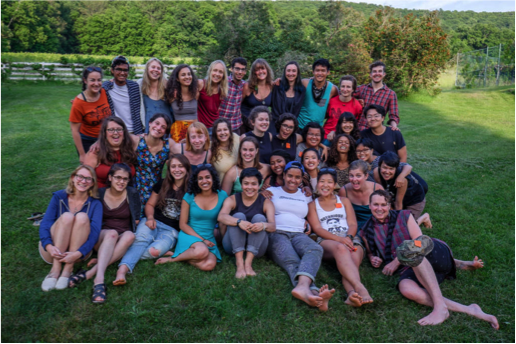Growth Hacking for NGOs and Nonprofits: How a Few Staffers Can Mobilize Millions. Our research for “Beyond the First Click: How today’s volunteers build power for movements and NGOs” began with a phone call to author and academic, Hahrie Han. Han says: There are some organizations that just do organizing; they do that really deep work in local communities…but they’re never able to take the great work they do and scale it. Listen to the full interview with academic and author Hahrie Han on the difference between mobilizing and organizing and what can happen when organizations blend the two techniques. Showing Up for Racial Justice (SURJ) is growth hacking by blending mobilizing and organizing for scale. “Without these leaders, SURJ wouldn’t exist.” Amplifying an organization or movement with volunteers isn’t a new idea. They were leaders in Bernie Sanders’s presidential campaign, and they argue that when organizations and campaigns hire more full-time staff, they tend to engage fewer volunteers and lose power. Those supporters want to help your effort succeed. 350.org is an expert at going wide, but it’s also going deep with Fossil Free by building distributed teams of highly-trained activists to scale the movement on university campuses. If NGOs are going to build stronger, distributed networks more quickly, Han, Smith, and Goldstein agree that NGOs need to blend web-based movement-building techniques with a deep commitment to training and nurturing volunteers.

Julie is the co-author with Greenpeace Mobilisation Lab and Change.org of “Beyond the First Click: How Today’s Volunteers Build Power for Movements and NGOs.” This article is adapted from the report.
If you spend five minutes in the company of software entrepreneurs, you’ll hear the phrase “growth hacking.” It refers to a mixed bag of experimental strategies and tactics that startups use to grow quickly and exponentially. So, what does growth hacking look like in the nonprofit world?
Our research for “Beyond the First Click: How today’s volunteers build power for movements and NGOs” began with a phone call to author and academic, Hahrie Han. While studying civic engagement models for a recent book, she discovered that orgs that blend “mobilizing” and “organizing” techniques can engage people at scale more quickly. That idea stuck with us. And, as we interviewed more NGOs and experts, evidence for Han’s thesis snowballed.
In Han’s definition of mobilizing, nonprofits tend to focus on breadth—on gathering large numbers of supporters as a way to build power. On the other hand, organizing nonprofits tend to invest deeply in nurturing volunteer leaders to ensure there are skilled, committed people in place to do the organization’s work. Han says:
There are some organizations that just do organizing; they do that really deep work in local communities…but they’re never able to take the great work they do and scale it. On the flip side, I see organizations that have a ton of scale because they do a lot of mobilizing. But even if they’re able to achieve changes they want to make, those changes are fragile because they don’t have the leadership core, that depth, that continues to advocate for change over time.
Listen to the full interview with academic and author Hahrie Han on the…

COMMENTS